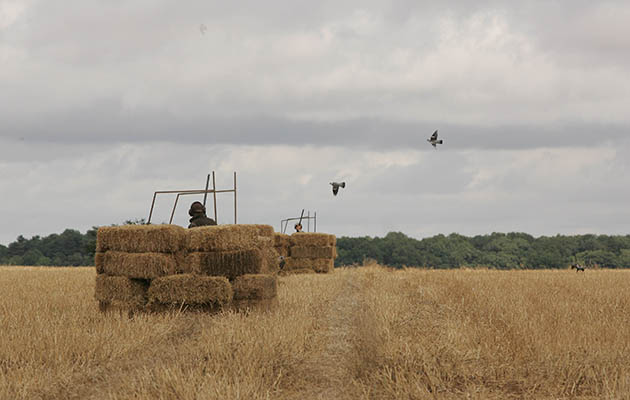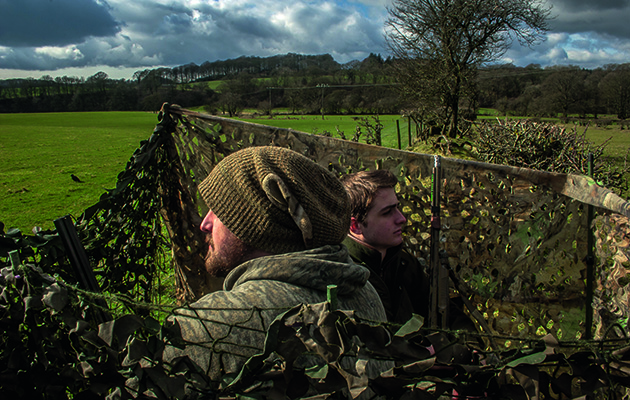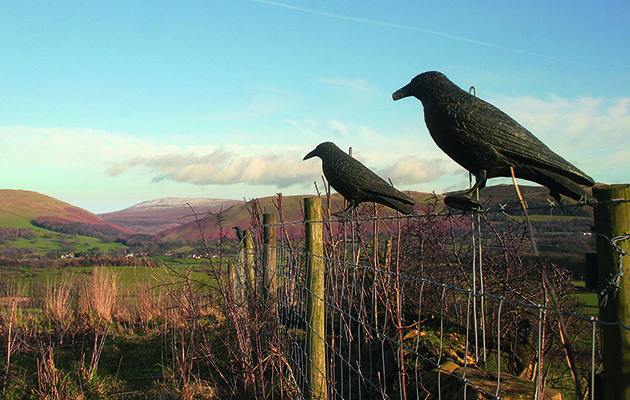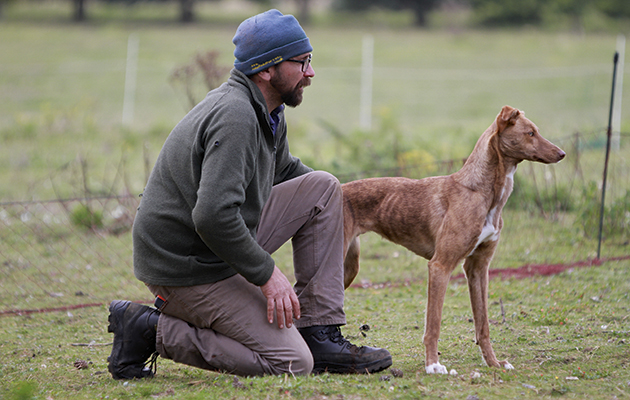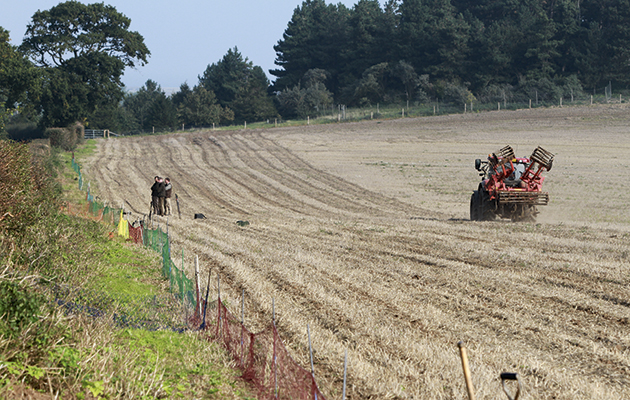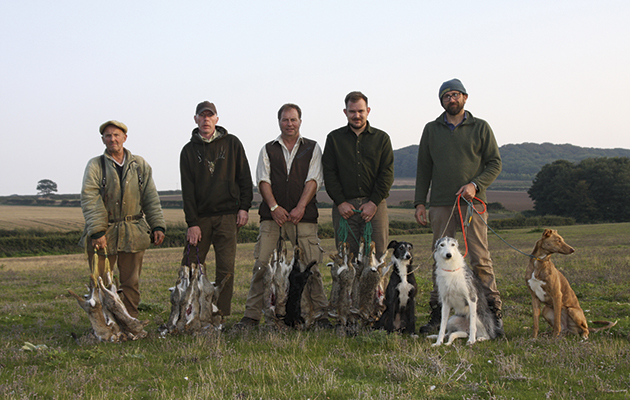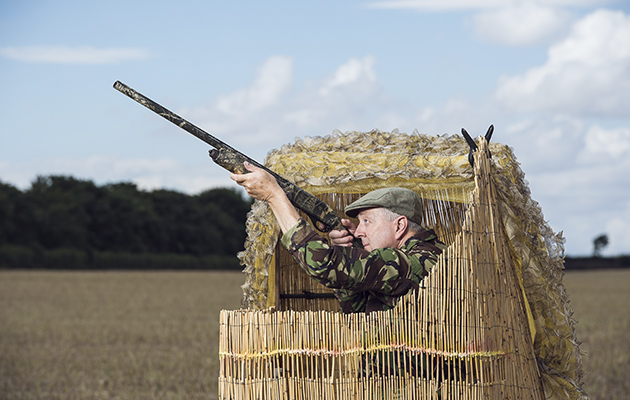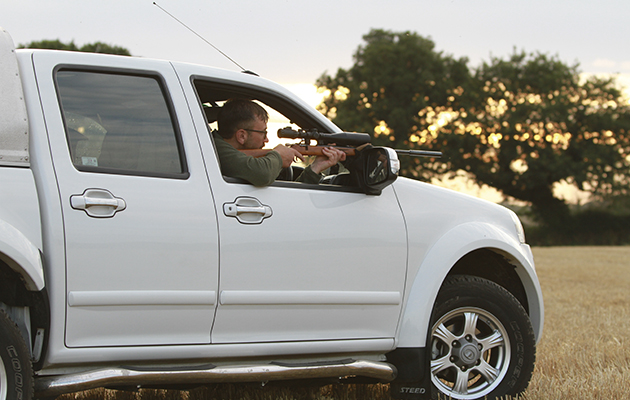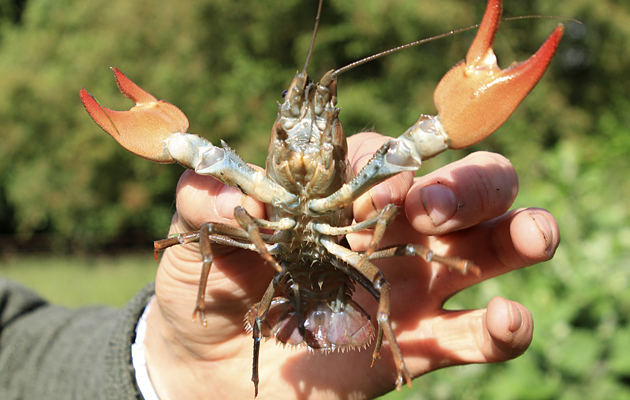Setting up a pigeon magnet
A pigeon magnet creates movement and the impression of activity over the chosen crop. Pigeon eyesight is phenomenal and, when coming from a distance, the movement in or around your decoys can act as a huge draw.
Pigeon are attracted by the movement of the white wing bars and neck bars and, when they work, can give confidence on approach. Remember to use a pigeon magnet as an aid. I try not to decoy them to the magnet, but use it only as a draw, making sure that they keep their focus on the decoys. This doesn’t always work, but it’s what I’m aiming to achieve.
When it comes to choosing the pigeon magnet set-up, I stick to some basic rules. Magnets have always worked well over laid crops, because, from a distance, the magnet is concealed by the standing crop. Usually all that can be seen are the birds moving around on top of the laid area.
Taking this principle, I try to conceal my pigeon magnet as much as possible. The magnets I use, depending on the height of the crop or stubble, sit low to the ground — doing this will take away the magnet’s outline. I also disguise the magnet by covering the base all the way to the motor with a crop or straw, depending on what I’m shooting over. Effectively I’m blending the magnet into its surroundings.
Pigeon magnet location
The rule of thumb is that your magnet should be placed in an upwind situation. I tend to site mine 10 to 15 yards away from my main decoys so that approaching birds are attracted by the movement, but then decoy to the static dead birds.
Don’t be frightened of trying something different, however, and always pay careful attention to wind direction. If you place your pigeon magnet incorrectly for the wind you will make the shooting difficult or could even cause the birds not to commit.
Decoys on the arms
There are lots of different decoys you can buy to put on the arms, from flock-covered plastic with plastic wings, foam winged varieties or hyper flaps. Don’t waste your time — use dead birds and dead birds only. But make sure these are in good condition, with clear wing and neck bars. This is so important because these are what attract arriving birds. I angle the birds on the arms inwards, towards the motor so that when the birds are going round at speed the wing and neck bars are really shown off.
Over the years I’ve tried lots of different things with pigeon magnets in lots of different situations, trying to create natural-looking movement at different times of the year. During the winter I’ve placed four magnets close to each other, giving the impression, at a distance, of a flock. This did work well, but took a lot of setting up. In some cases just a magnet on its own has worked. I have also used magnets to condense flightlines coming to a field.
If birds have been magnet-shy there have been times when I’ve used two magnets placed at a distance to turn birds towards my hide. As with all pigeon shooting, you mustn’t forget the basics. Only knowledge, reconnaissance, fieldcraft and understanding the bird and its behaviour will get you to that red-letter day. There is no decoying contraption that can replace that.

